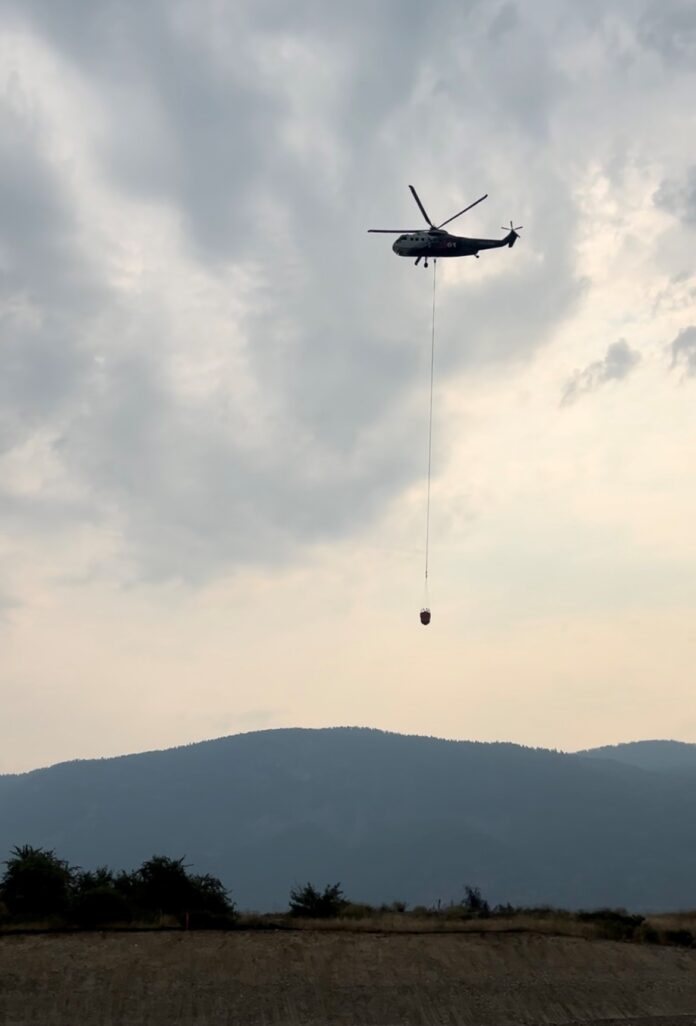Wildfire Update and Temporary access permits
Wildfires continue to burn out of control at the north end of the Slocan Lake.
There are 145 evacuation orders and 420 properties on evacuations alerts across the Aylwin Creek Fire which has grown to 121 hectares, the Komonko Creek fire which is now at 534 hectares, and across the lake, the Nemo fire has burnt through 823 hectares and the Mulvey Creek fire is at 187 hectares.
Regional District of Central Kootenay (RDCK) Emergency Operations Centre (EOC) Director, Dan Seguin is advising evacuated residents they can only return to your property if they have an approved temporary access permit.
Temporary Access Permits (TAP) are restricted to the following:
- Critical Infrastructure or utility agencies may require access in order to service (ie. refuel, inspect) or make repairs to affected critical equipment and sites;
- Members of the agriculture sector may need to make essential repairs to fencing, evacuate or check on livestock condition and care as required
- Community members may request access so they can retrieve important medication, tend to their domestic animals
The RDCK is encouraging people to apply for the permit 24 hours before needing access.
“The process for the temporary access permits is that they need to be received 24 hours prior to the intended date of entry by 9 a .m and then what we try to commit by as much as we can is that they’d be notified of the outcome of their application by 5 p .m. prior to the intended date of entry.” said Seguin.
With dynamic wildfire condition on the way due to wind and colder front coming in, temporary permits can be revoked for public safety.
You can apply for a permit through the RDCK website.
The RDCK is also encouraging people to be respectful of roadblock in play.
“Individuals who are going by the roadblocks pose a threat to themselves, they may not necessarily know and have the situational awareness where the fires are.” said Seguin.
“Also, if we’ve got individuals that are going through into the evacuated areas, it stops efforts if there are air tankers or helicopters working there, we have to shift resources away from where we can possibly create harm to individuals who have gone through these roadblocks.”
Public Information Session
Sunday night’s public information session in New Denver was well attended with over 200 people in the room and another 142 watching from online.
“The tone started unsettled. Folks wanted to understand information about the fire that was surrounding their community and BC Wildfires approach and where they could find support services, emergency support services for individuals that had been evacuated from their homes, trying to understand temporary access permits and how they can go check on livestock or pets or get important medication that they needed to get to.”
“It went from about 6 o ‘clock till close to 9 o ‘clock and hopefully everyone got the information and that it was helpful.”
“One of the things that was really sweet is they also really expressed gratitude for the firefighters working in that area and to the point of trying to figure out how they could get them food and things like that so lots of gratitude in the room.”
Where to find information
The BC Wildfire Service is the primary source of information for all wildfire activity.
Regional District Central Kootenay (RDCK) is the primary source of information for evacuation orders and evacuation alerts.
Drive BC for all information on roads and road closures.
Be the first to know! Don’t miss out on breaking news and daily updates in your area. Sign up to MyKootenayNow News Alerts.




